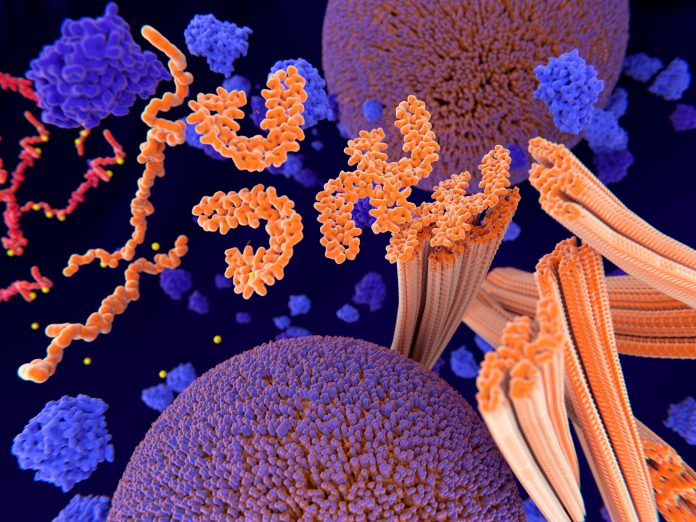
An international team of researchers has developed a promising new drug that works on both major Tau protein aggregation “hotspots,” a key driver of neurodegeneration including Alzheimer’s disease. The novel peptide inhibitor, RI-AG03, has demonstrated efficacy in preventing Tau aggregation in both laboratory and fruit fly studies, while showing no toxicity to cells.
The study, published today in Alzheimer’s & Dementia: The Journal of the Alzheimer’s Association, was led by English researchers at Lancaster University in collaboration with teams at the University of Southampton, Nottingham Trent University, Tokyo Metropolitan Institute of Medical Science, and the University of Texas Southwestern Medical Center.
RI-AG03 is a retro-inverso, stable D-amino peptide that has been specifically engineered to target both aggregation-promoting hotspots of the Tau protein, an important advance in the field of Tau-targeting therapies.
“To our knowledge, RI-AG03 is the only peptide aggregation inhibitor that inhibits aggregation of Tau by targeting both aggregation-promoting hotspot motifs simultaneously,” the researchers wrote. “As such, we believe that our study will have a significant impact on drug discovery efforts in this arena.”
Tau aggregation is a primary contributor to neurodegeneration, and addressing this process has become a major target for drug developers. The study presents compelling data indicating that RI-AG03 not only prevents Tau aggregation in vitro but it also rescues a biosensor cell line that stably expresses Tau repeat domains with the P301S mutation fused to Cer/Clo. It also rescues aggregation-dependent phenotypes in vivo, suppressing neurodegeneration and extending lifespan.
The peptide-based approach to inhibiting tau aggregation has some distinct advantage the researchers noted.
“We know that the toxicity of the Tau protein is intimately linked with its ability to aggregate, so by inhibiting aggregation we expect to see desirable effects,” said lead author Anthony Aggidis, PhD, a former postdoctoral research associate at Lancaster University and visiting researcher at the University of Southampton. “But current aggregation inhibitors have had many side effects because they can interfere with the functions of many other proteins. RI-AG03 is specifically designed against the Tau protein, meaning it’s less likely to undesirably interact with other proteins.”
After showing positive results in lab tests, the researchers further tested the effectiveness in fruit fly models that had pathogenic tau. Their work showed that RI-AG03 suppressed neurodegeneration and extended the lives of the fruit flies by about two weeks—a significant time period when compared to the lifespan of insects.
To better understand the mechanisms of action of the engineered peptide, the researchers examined the brains of the fruit flies.
“When we didn’t feed the flies with the peptide inhibitor, they had lots of the pathogenic fibrils, which group together to make up a tangle. But when we fed them with the drug, the pathogenic fibrils decreased significantly in quantity,” noted senior author Amritpal Mudher, PhD, professor of neuroscience at the University of Southampton.
To further confirm their findings, the team also tested the drug in a human cell line that is designed to detect pathogenic tau fibril formation and showed similar results to those seen in fruit flies.
In addition to the development of RI-AG03, the study contributes to a broader understanding of the mechanisms underlying Tau aggregation and its implications for neurodegenerative diseases. The intricate relationship between Tau aggregation and neuronal toxicity has made it a critical target for therapeutic interventions, and RI-AG03 represents a strategic advancement in that pursuit.
With this early success, the collaborators will now move on to testing RI-AG03 in rodent models in advance of progressing to clinical studies.










![Best Weight Loss Supplements [2022-23] New Reports!](https://technologytangle.com/wp-content/uploads/2022/12/p1-1170962-1670840878.png)




